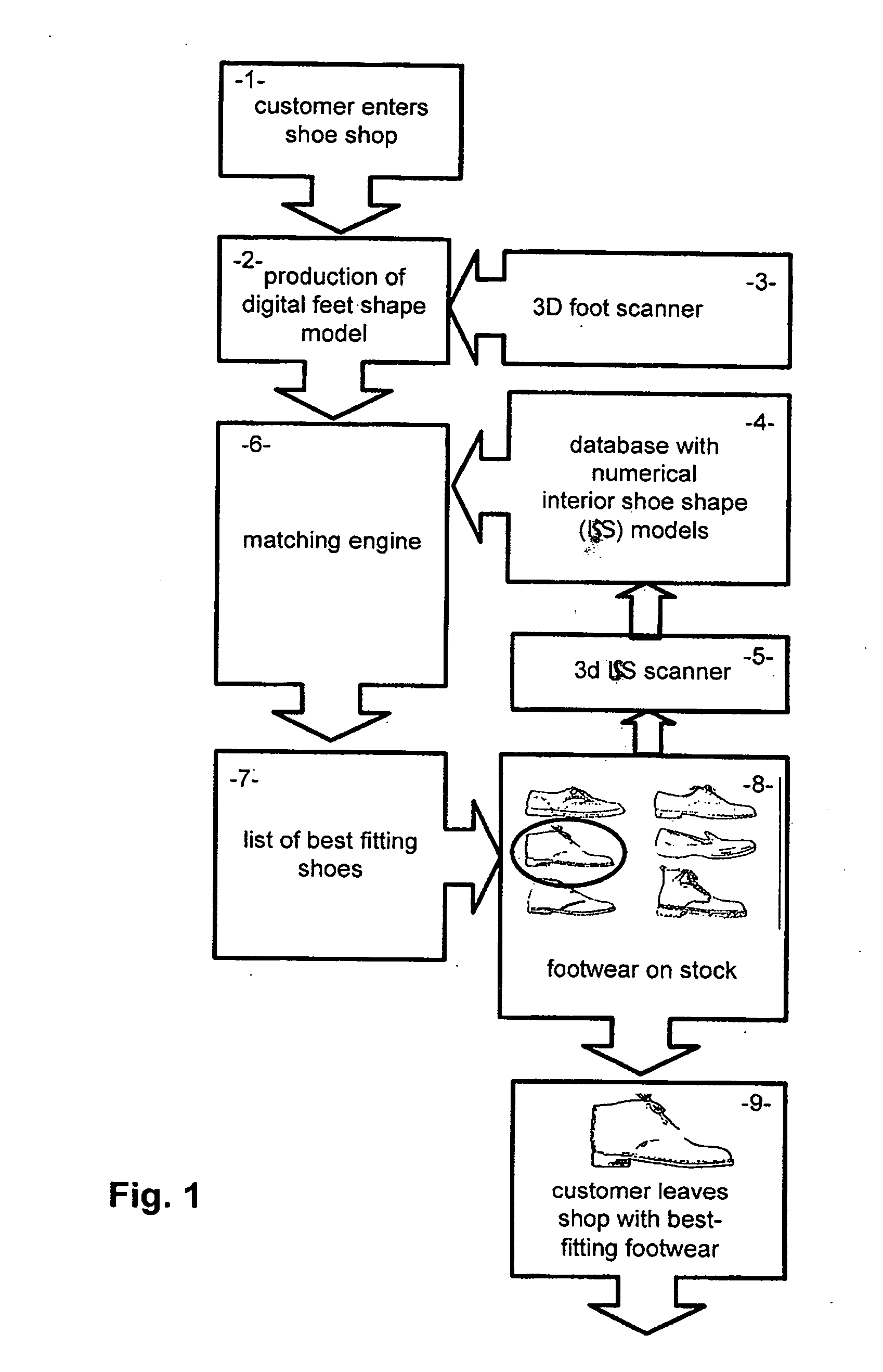Computerized method of identifying best fitting footwear
a technology of best-fitting footwear and computerized methods, applied in the field of best-fit footwear identification by computerized methods, can solve the problems of failure to apply the problem of best-fit selection, and many (physical) shoe selling shops today do suffer from poor footwear-related expertise of sta
- Summary
- Abstract
- Description
- Claims
- Application Information
AI Technical Summary
Benefits of technology
Problems solved by technology
Method used
Image
Examples
Embodiment Construction
[0027]The fundamental idea of the present invention is to simplify and enhance the quality and the productivity of the business of footwear purchase as well for the buyer as for the seller.
[0028]Referring to drawing FIG. 1, the customer (1) entering a shoe shop and looking for a pair of best-fitting footwear gets its feet individually scanned using an optical 3D foot scanner (2). Such foot scanners as listed above generally operate with optical triangulation or photogrammetrical methods and are becoming more and more common and easy to operate even by the non-expert shoe shop staff. They generate quite precise and dense digital 3D models (2) describing the shape of the foot either as a coordinate point cloud, as a triangulated or surfaced 3D model or additionally as a list of Brannock-type measures such as length, girth width and circumference, medial axis angle etc. which are automatically extracted from the digital 3D foot model.
[0029]It is a particular idea of the invention that ...
PUM
 Login to View More
Login to View More Abstract
Description
Claims
Application Information
 Login to View More
Login to View More - R&D
- Intellectual Property
- Life Sciences
- Materials
- Tech Scout
- Unparalleled Data Quality
- Higher Quality Content
- 60% Fewer Hallucinations
Browse by: Latest US Patents, China's latest patents, Technical Efficacy Thesaurus, Application Domain, Technology Topic, Popular Technical Reports.
© 2025 PatSnap. All rights reserved.Legal|Privacy policy|Modern Slavery Act Transparency Statement|Sitemap|About US| Contact US: help@patsnap.com



